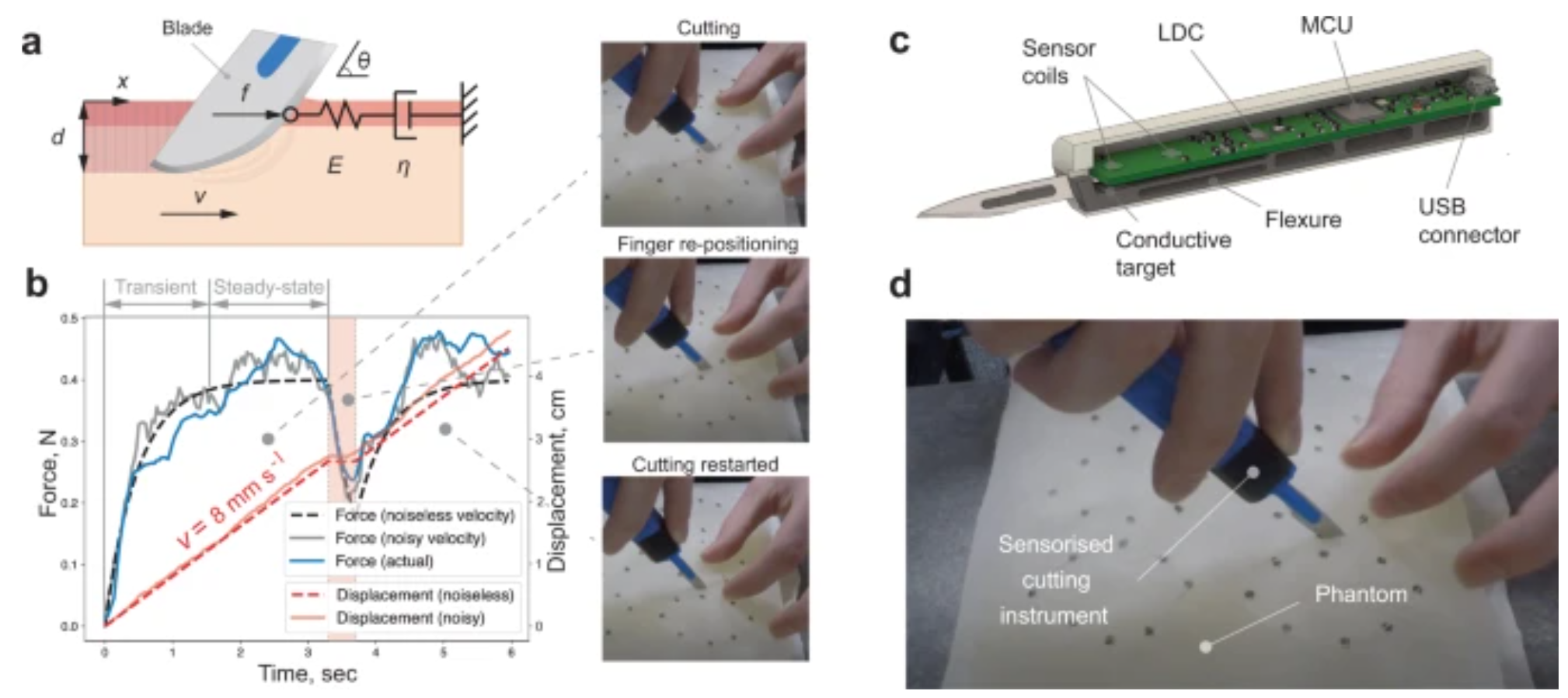FEATURED PUBLICATIONS
A generative force model for surgical skill quantification using sensorised instruments
Artūras Straižys¹, Michael Burke¹ ², Paul M. Brennan¹, Subramanian Ramamoorthy¹ ³
¹ – University of Edinburgh, Edinburgh, UK
² – Monash University, Clayton, VIC, Australia
³ – Alan Turing Institute, London, UK
Published in Communications Engineering (2023) 2:36
Abstract: Surgical skill requires the manipulation of soft viscoelastic media. Its measurement through generative models is essential both for accurate quantification of surgical ability and for eventual automation in robotic platforms. Here we describe a sensorised scalpel, along with a generative model to assess surgical skill in elliptical excision, a representative manipulation task. Our approach allows us to capture temporal features via data collection and downstream analysis. We demonstrate that incision forces carry information that is relevant for skill interpretation, but inaccessible via conventional descriptive statistics. We tested our approach on 12 medical students and two practicing surgeons using a tissue phantom mimicking the properties of human skin. We demonstrate that our approach can bring deeper insight into performance analysis than traditional time and motion studies, and help to explain subjective assessor skill ratings. Our technique could be useful in applications spanning forensics, pathology as well as surgical skill quantification.

Figure 1: a Maxwell model of the cutting process, where x denotes blade’s displacement, d is depth of excision, θ is angle of blade insertion, v is blade’s velocity, E and η are spring and damping coefficients, respectively. (Pink and ivory colours denote the outer and inner layers of tissue phantom, respectively. The shaded area corresponds to the phantom region separated by the blade.) b Generated incision force and blade displacement profiles versus the actual incision force measurement (blue). (E = 1 N/cm, η = 0.5 N s/cm, v ∈ [0, 8] mm/s with standard deviation of 0.35 mm/s). c Concept design of the sensorised scalpel (here LDC is Inductance-to-Digital converter, MCU is Micro-controller Unit and USB is Universal Serial Bus). d The experiment: 12 medical students and two professional surgeons were asked to perform a series of 12 elliptical excisions on a tissue phantom.
